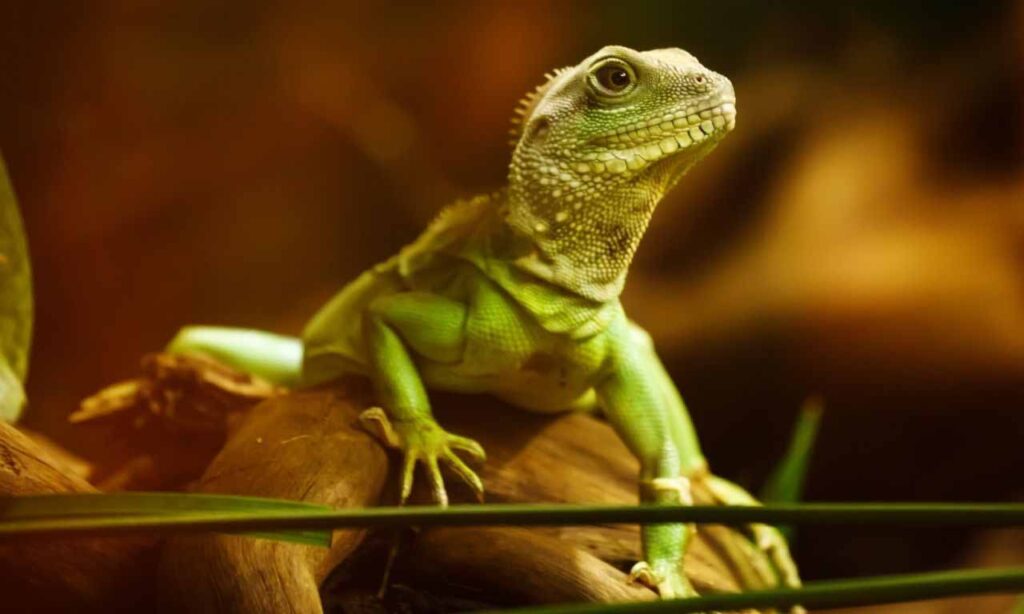
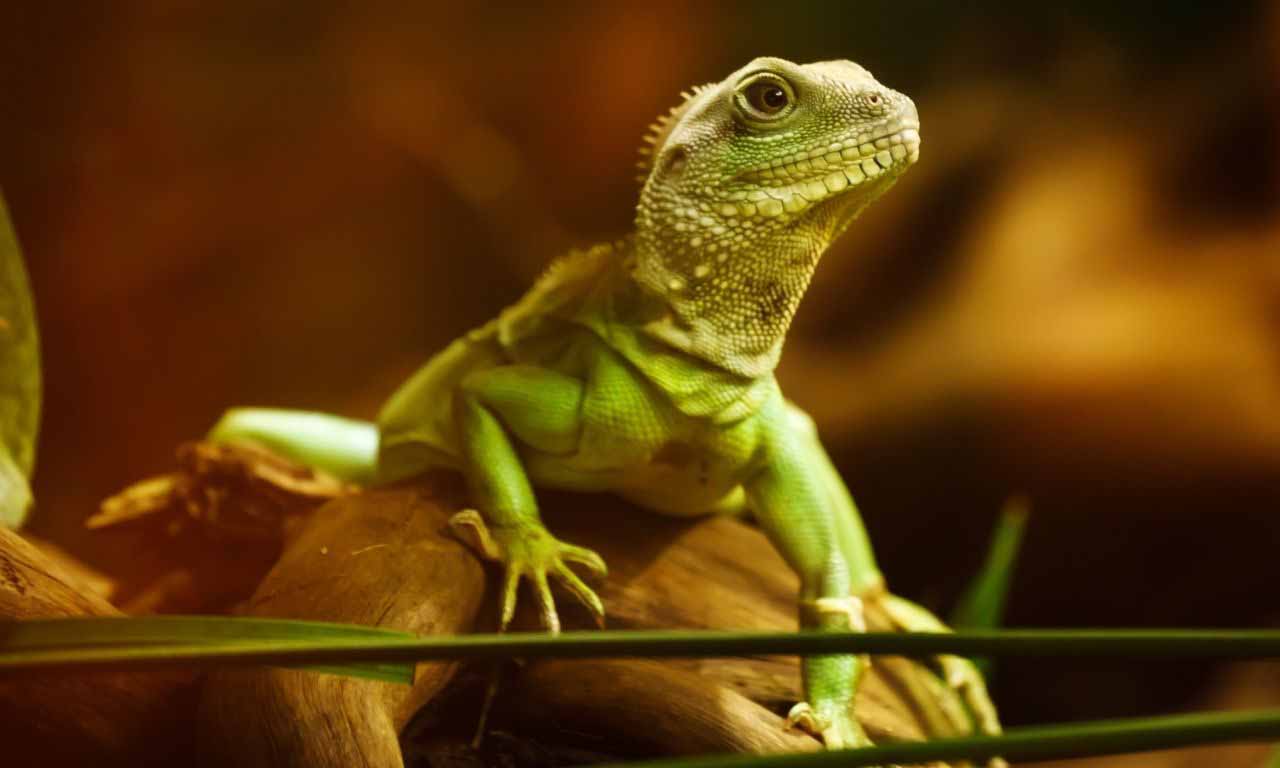 You can see lizards almost every corner of the world, and some lizards live with us. So knowing whether they are poisonous or not is needed. So are lizards poisonous?
You can see lizards almost every corner of the world, and some lizards live with us. So knowing whether they are poisonous or not is needed. So are lizards poisonous?
There are just two poisonous lizard species one is Gila monster and other is Mexican beaded dragon. All other lizards are non-poisonous. Lizard skin can have many pathogens and bacteria that can make people ill, but it doesn’t have poison. There are, however, venomous lizards that can inject venom.
Gila Monster
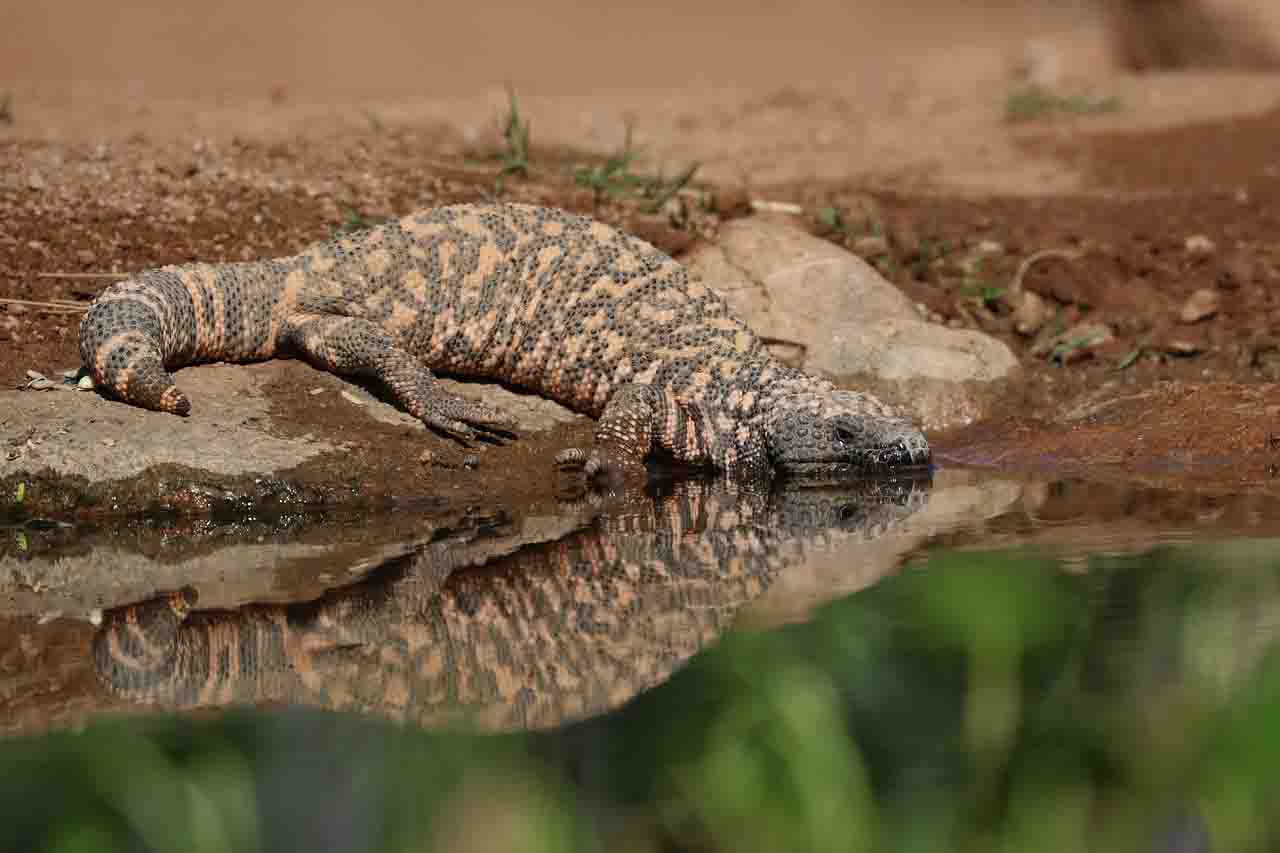 Gila monster lives in Arizona and Mexico and can also be found in the extreme southeastern corner of California, in Southwestern corners of Utah and New Mexico, they can also be spotted on the southern tip of Nevada. Gila monster is not only venomous, but they are poisonous.
Gila monster lives in Arizona and Mexico and can also be found in the extreme southeastern corner of California, in Southwestern corners of Utah and New Mexico, they can also be spotted on the southern tip of Nevada. Gila monster is not only venomous, but they are poisonous.
Which means if you eat them or if they come in contact with your food, you’ll fall ill. However, there are no recorded cases because people avoid Gila monster because of their painful bite, so nobody dares to eat them. Gila monster injects their venom when they bite.
Their bite is extremely painful, but it usually doesn’t kill humans. They are fast and can bite suddenly without warning if you are too close to them, so avoiding them is the best idea if you don’t want to feel the excruciating pain that comes after a bite.
People often refer to it as if lava is flowing through their veins. Imagine how painful that can be. There is no antidote to their venom only thing the doctors can do is monitor your heart rate, oxygen intake all these basic things. You’ll have to deal with the pain by yourself if a Gila monster bites you. So, it’s better to avoid them.
Mexican Beaded Dragon
 Mexican bearded dragon can be found in desert scrub and tropical thorn woodlands. They are venomous as well as poisonous. These lizards also have a powerful bite and can bite deep to inject its venom in the victims’ bodies.
Mexican bearded dragon can be found in desert scrub and tropical thorn woodlands. They are venomous as well as poisonous. These lizards also have a powerful bite and can bite deep to inject its venom in the victims’ bodies.
Since they are poisonous, getting them inside the body will make you sick. However, there are no recorded cases of people eating Mexican Beaded Dragon.
These are the only two lizards that are found to be poisonous other lizards are not poisonous.
Why We Think All Lizard Are Poisonous
You probably have seen lizards falling over your food or getting on your food, and after eating that food, that person gets ill, or you probably have seen your pet cat or dog getting sick after eating a lizard. The reason is that these lizards have a lot of pathogens and bacteria inside their body even though they are not poisonous. So if a cat or dog injects it, they can start vomiting.
Your cats and dogs will get ill because of those pathogens and bacteria. When we see that the pet/stray cat or dog is getting sick after eating a lizard, we automatically assume that lizards are poisonous; however, like mentioned those pathogens and bacteria act up and create various kinds of symptoms inside the animal’s body.
Will Other Lizard Die If They Eat Poisonous Lizard
It depends upon the lizard species. As mentioned earlier, there are only two poisonous lizard Gila monster and Mexican beaded lizards. Both of them are relatively big lizards so lizards that can eat them have to be much bigger like monitor lizard or some big species of monitor lizard.
Monitor lizards are somewhat immune to venom so they won’t die from their venomous bite and they won’t die even if they manage to eat the Gila monster. The poison in the Gila monster won’t kill the monitor lizard.
Of course, this is possible because they live in an environment where they always have to fight against various venomous creatures like snakes, scorpions etc. These monitor lizards eat snakes, scorpions and other venomous animals. So if the snake venom is not affecting them, then the Gila monster venom or it’s poison won’t affect them either.
Some Venomous Lizards That You Must Know About
There are only two known poisonous lizards, but there are a lot of venomous lizards out there.
Komodo Dragon
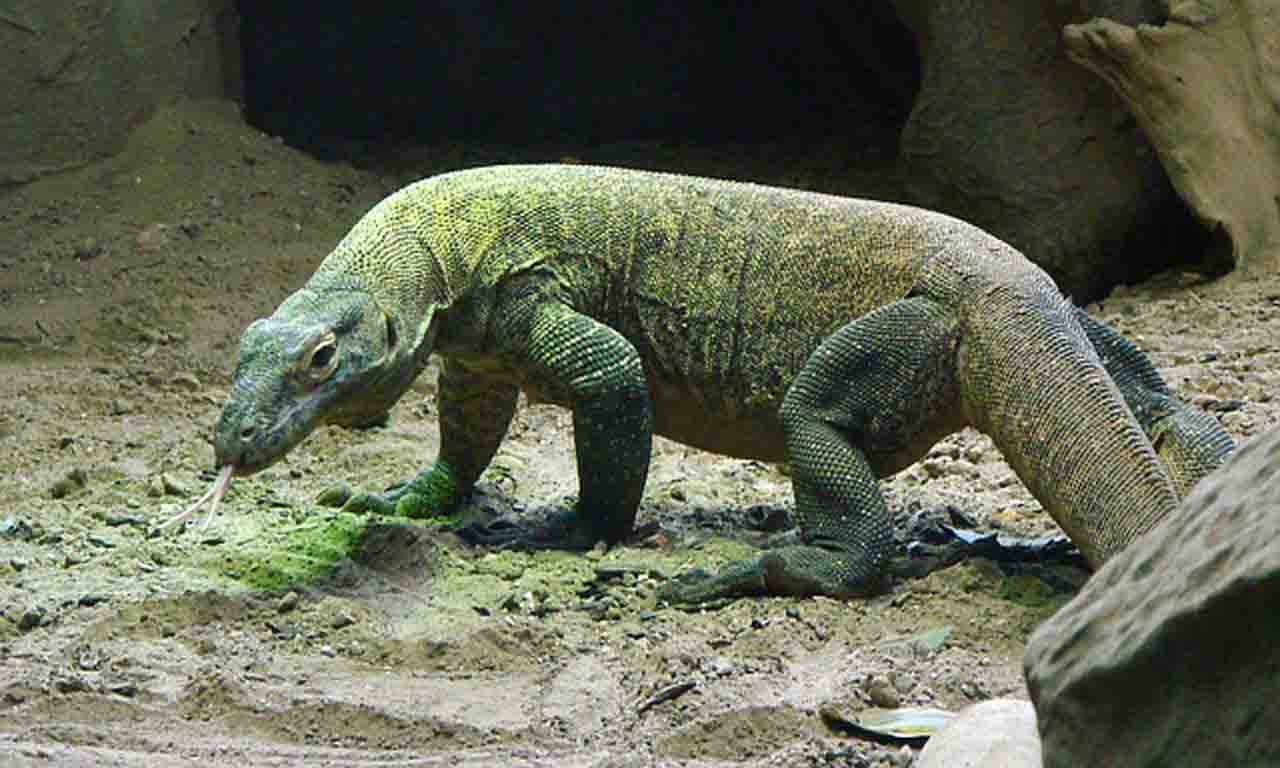 The venom of a Komodo dragon is unique. It is a mixture of bacteria that stops blood clotting. Once the Komodo dragon bites, it’s prey the blood stops clotting and the animal dies of blood loss or becomes very weak and unable to move after that the Komodo dragon devours its prey.
The venom of a Komodo dragon is unique. It is a mixture of bacteria that stops blood clotting. Once the Komodo dragon bites, it’s prey the blood stops clotting and the animal dies of blood loss or becomes very weak and unable to move after that the Komodo dragon devours its prey.
Komodo dragon uses this venom over everything that it sees prey, and if humans get too close to them, then the Komodo dragon will also treat them as prey and will try to bite them.
Monitor Lizards
Monitor lizards are another big species of lizard. They may not be the biggest lizards, but some of them can be large and venomous. These lizards venom has a mild effect on humans, but their bite is dangerous. They have sharp teeth that can crush bones and inject the venom into the victim body.
Iguanas
Iguanas can get aggressive when they feel threatened and recent study shows that they have venom although it’s not fatal to humans; it can create diseases like Salmonella. Iguanas are relatively big and can attack if they feel agitated. They are often kept as pets, and sometimes people get bitten by iguanas leading to the disease.
It’s best not to use your hand to feed iguanas, use a tweezer or a big stick and feed them. Iguanas can be very aggressive initially, especially if they are caught as an adult, but if they are caught when they are young, their behavior can differ. But regardless of whether they are caught as an adult or at a young age, they have venom, which has a mild effect on humans.
Crocodile Monitor
I cannot complete the list without mentioning crocodile monitor lizards. These lizards are much bigger than other monitor lizards species and can grow up to 5 meters (16 feet) in length. They are found on the island of New Guinea. Monitor lizards are venomous and so is crocodile monitor lizards.
The significant difference between common monitor lizards and crocodile monitor lizard is their size and aggressiveness. Image a 5-meter crocodile monitor lizards charging towards you.
These lizards are even longer than Komodo dragon if not heavier. They have tremendous bite force and should be avoided at all cost. They are more feared because of their razor-sharp teeth than venom, but they are venomous.
Bearded Dragon
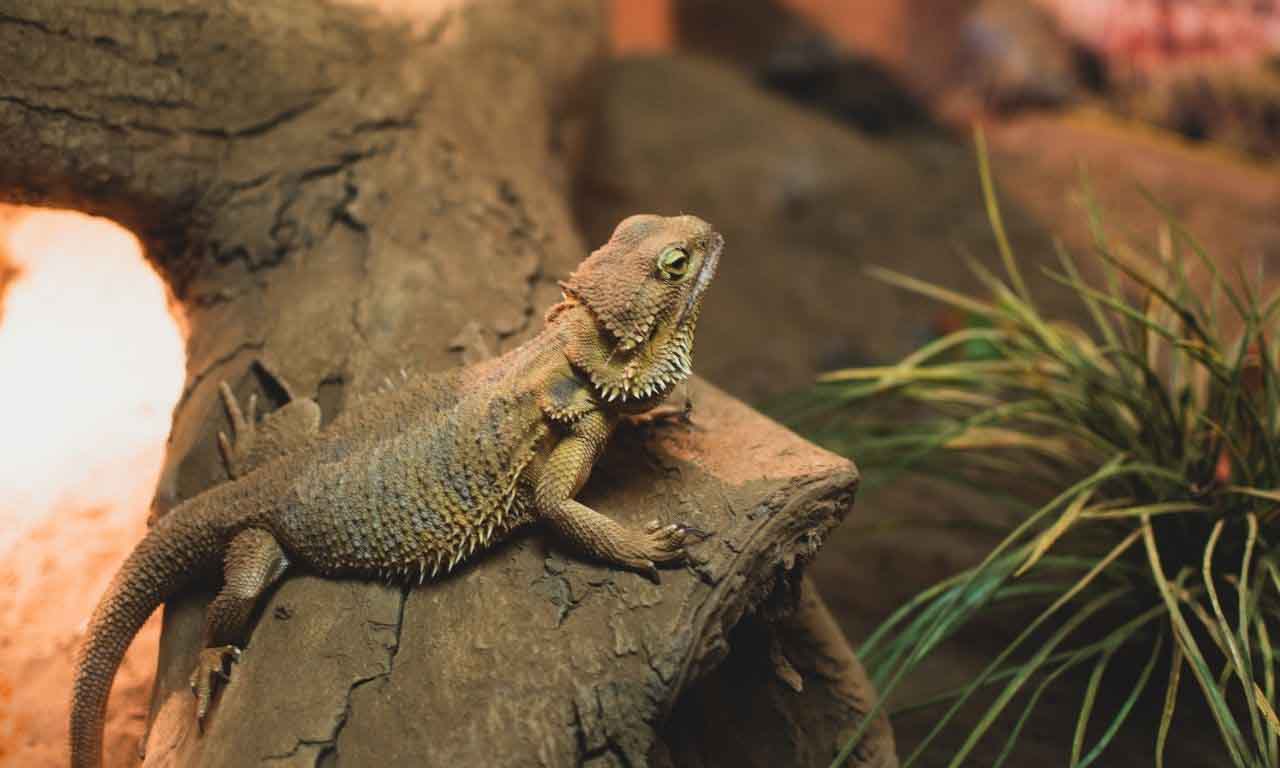 One of the most common pet bearded dragons is also venomous. They inject venom when they bite leading to swelling. This poison is similar to a rattlesnake, but it’s injected in mild quantities, so they are not fatal to humans.
One of the most common pet bearded dragons is also venomous. They inject venom when they bite leading to swelling. This poison is similar to a rattlesnake, but it’s injected in mild quantities, so they are not fatal to humans.
Previously, the bearded dragon didn’t have venom, but later in 2005, an Australian scientist conducted a study and found venom in the bearded dragon.
Along with the venom, the bearded dragon seems to have bacteria in their mouth, creating nasty swelling if bitten. The University of Leiden also researched the bearded dragon and found them to be venomous. Click here to read what they found.
Why Lizard Venom Is More Problematic Than It’s Poison
Assuming most lizards are not poisonous but venomous, we can clearly understand why we need to handle lizards very carefully. Many people keep lizards as their pet and ignore the fact that their pet lizards can inject venom.
The chances of a random lizard falling on your food and releasing their pathogens are much less than the chances of getting bitten by a venomous lizard.
Lizards are everywhere you can find them almost in all corners of the world. Let’s say you go out camping chances are you will come across a lizard that may or may not be venomous. Many people ignore the lizard because they are small, and most people are not aware of venomous lizard’s species.
This lack of information and underestimating lizard can bring in some terrible problems. Even if you stay at your home, you can still encounter a venomous lizard because some venomous lizard is small and can get inside a person’s house.
The venom may have a mild reaction in humans, but that doesn’t mean you can take them lightly. Most popular lizards like a bearded dragon, iguana, have venom, so it’s essential to know more about lizards and their venom.
Some lizards are also very aggressive, and some are very big along with that they have a very powerful bite. The powerful bite mixed with venom can make them very dangerous. You should approach wild lizards if you do not know about the lizard.
Welcome to my blog. I have been doing pest control for years since my house, garden and pets were always attacked by various kinds of pests and as a result I had to know proper pest control techniques that works. In this blog I share all the tips and tricks that I know and I hope you’ll find it helpful.
